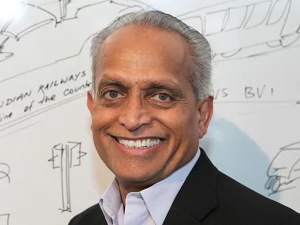
By Chandrakant Patel
Chief Engineer and Senior Fellow, HP
Community colleges fill a crucial gap in workforce development by addressing several disruptive trends in STEM-related fields.
As classes resume this month at U.S. colleges and universities, the tens of thousands of freshmen just embarking on their mechanical engineering degrees need not spend much time worrying about finding good jobs after earning a bachelor’s degree. The employment picture for America’s newly minted engineers is—and almost always has been—relatively rosy.
But those who employ technical workers have plenty to worry about. That’s because there simply aren’t enough skilled men and women without four-year degrees to fill the estimated 3.4 million technical positions that the National Academies of Sciences, Engineering, and Medicine estimate will be open by next year.
So much opportunity for rewarding, high-paying jobs, and so few trained, qualified people to fill them.
My own path to a productive STEM career started at City College of San Francisco, where I earned an associate’s degree in engineering. While I went on to earn advanced degrees at UC, Berkeley, and San Jose State University, many of my CCSF classmates found good jobs in Silicon Valley, just a short drive down the 101 freeway from the two-year community college.
In California and elsewhere, community colleges play a critical role in the public education ecosystem. All students who complete two years at a community college and amass the necessary credits are guaranteed admission to the prestigious and highly competitive University of California system. Because those first two years can be completed close to home, and at a substantial discount in terms of cost, community colleges open the door to a four-year or higher degree for countless thousands of students who, for a host of reasons often having to do with systemic inequities, might otherwise be denied the chance.
But community colleges are more than a stepping stone to a four-year degree. Technical training certificates and two-year degrees fill a crucial gap in workforce development, providing focused, often specialized training required by employers but not available in most high schools.
ASME is already working on this challenge, supporting a new initiative to create “Community College Engineering Pathways.”
Community colleges are uniquely positioned to address several disruptive trends in STEM-related fields, including the increasing velocity of technological advancement, which creates demand for skillsets that may not have existed just a few years ago. These agile institutions can respond to new methods of engineering, such as computer simulation and robotics, that are changing the way technical work is performed. And perhaps most important, community colleges can meet the urgent demand for greater diversity, equity, and inclusion across engineering—not just because it’s the right thing to do, but because the U.S. economy simply can’t compete in a global marketplace when it leaves so much talent on the table.
There are more than 1,000 community colleges nationwide, most with very low academic and economic barriers to entry. They offer flexible schedules (roughly two-thirds of students attend part-time), and a broad array of technical and vocational training choices. It’s hard to imagine a better solution than community colleges to open doors of opportunity to the millions of young workers who either weren’t aware of the opportunities available to them or could find no realistic way to access them.
Three things have to happen for today’s young people to recognize and pursue these opportunities. First, they must become aware of the job possibilities for those with training but without a BSE degree. Second, young people (and older workers seeking a mid-career pivot) need clear and realistic roadmaps for winning rewarding technical jobs. And third, young people need a professional community where they can access employment information, internships, advanced training, and mentors.
For community colleges to meet the urgent needs of the marketplace and open doors of opportunity for the next generation, they will need faculty and courses that are focused on the most market-relevant curriculum. Many will need to step up their limited career advisory resources. And most will need to develop stronger relationships with private- and public-sector employers.
The ASME Foundation is already working on this challenge, supporting a new initiative to create “Community College Engineering Pathways.” Those of us who employ non-degreed technical personnel, and who enjoy successful technical careers ourselves, should applaud this effort.
CHANDRAKANT PATEL is the chief engineer and senior fellow of HP. To learn more about the ASME Foundation’s workforce development and sustainability initiatives, visit www.asmefoundation.org.